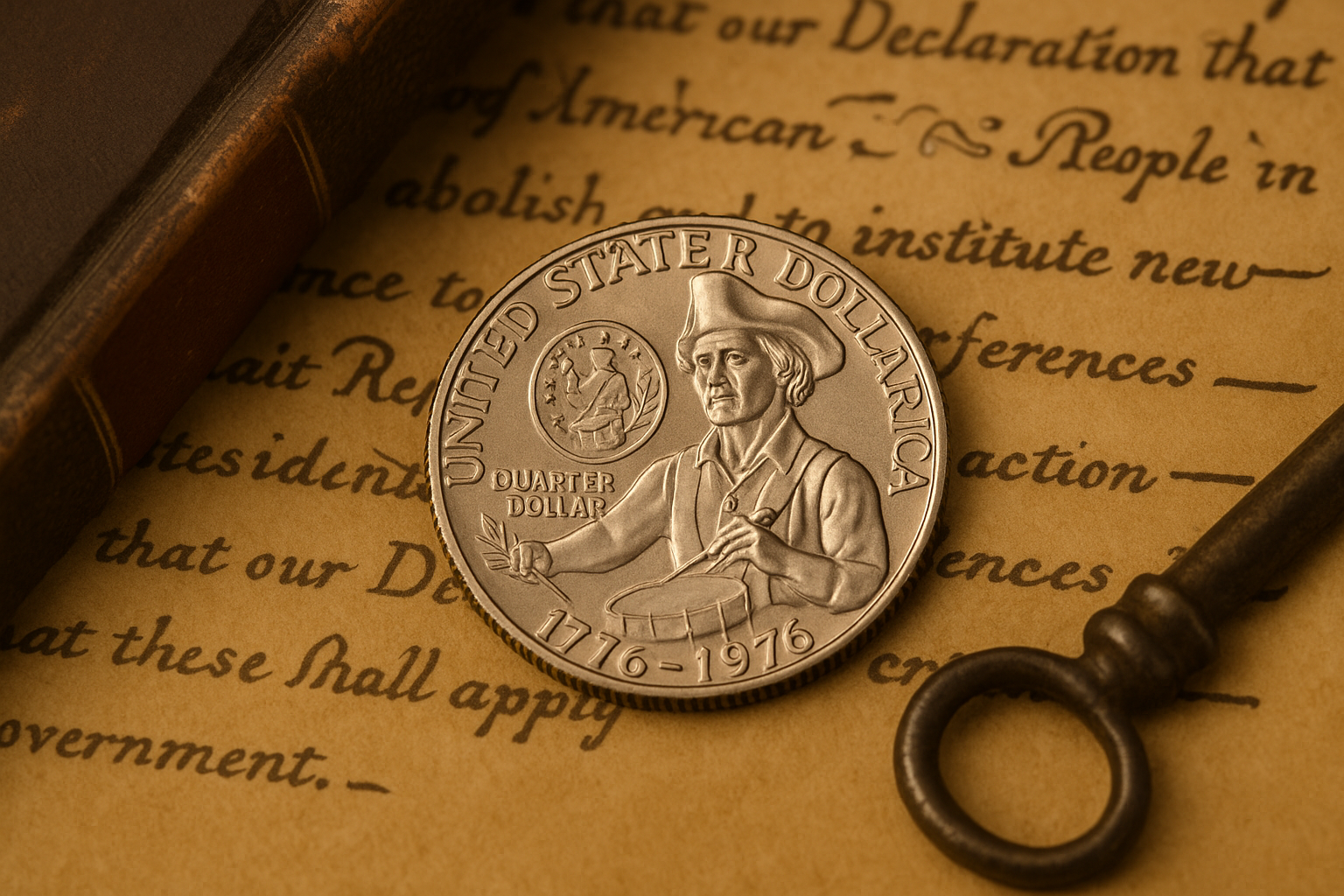Introduced in 1975 and 1976, the Bicentennial Quarter was struck to honor the 200th anniversary of the United States’ independence. These quarters featured a unique reverse design showing a colonial drummer boy, replacing the traditional eagle. Although billions were minted, some rare varieties and conditions have sold for thousands of dollars, including one recent sale of a 1976-D Bicentennial Quarter for $19,200 at auction.
So how can a 25-cent coin reach such a staggering value? Let’s break down what makes these quarters worth collecting — and which ones might be hiding in your change.
What Is a Bicentennial Quarter?
The Bicentennial Quarter is a special edition of the Washington Quarter issued by the U.S. Mint in 1975 and 1976. All Bicentennial quarters are dual-dated “1776–1976” on the obverse and feature a colonial drummer and torch design on the reverse.
The coins were minted in:
- Philadelphia (no mint mark)
- Denver (“D” mint mark)
- San Francisco (“S” mint mark – proof and silver versions)
Regular versions were struck in copper-nickel clad, while select collector editions were struck in 40% silver, especially the S-mint uncirculated and proof coins.
Why Some Bicentennial Quarters Are Valuable
While most Bicentennial quarters are only worth face value, key variants and high-grade examples can be extremely valuable. Here’s why:
- Minting Errors: Off-center strikes, double dies, and wrong planchets increase value.
- High-Grade Coins: Quarters graded MS67 or higher are rare and sell for thousands.
- Silver Composition: The 40% silver coins are worth significantly more than clad versions.
- Deep Cameo Proofs: Highly reflective proof coins with frosted devices command strong premiums.
- Low Population Grades: Coins with few high-grade submissions often see premium demand at auctions.
Recent Auction Highlight
A 1976-D Bicentennial Quarter graded MS68 by PCGS sold for $19,200 in 2022. It featured:
- Exceptional strike
- Full luster
- No noticeable marks
- Low census population at that grade level
This example shows that modern coins can be extremely valuable under the right conditions.
Bicentennial Quarter Value Chart
Here’s a general breakdown of Bicentennial Quarter values:
| Coin Type | Grade | Estimated Value |
|---|---|---|
| 1976 (No mint) Clad | MS65 | $10 – $20 |
| 1976-D Clad | MS67+ | $400 – $1,000+ |
| 1976-S Silver Uncirculated | MS67 | $100 – $200 |
| 1976-S Silver Proof | PR70DCAM | $300 – $850 |
| 1976-D Clad (MS68) | PCGS | $15,000 – $20,000 |
| Error Coins (Off-Center/Double Die) | Varies | $500 – $5,000+ |
How to Spot a Valuable Bicentennial Quarter
If you want to know whether your Bicentennial Quarter is worth more than 25 cents, look for:
- High-grade preservation — no scratches, bag marks, or wear
- S Mintmark — often signals silver or proof strike
- Frosted appearance with mirrored fields — a proof coin
- Doubled details on the date or lettering (double die)
- Unusual weight or color — may indicate a planchet error or silver content
Why Collectors Love Bicentennial Quarters
The Bicentennial Quarter appeals to both casual and advanced collectors because:
- It’s a one-year type with a distinctive design
- Offers an affordable entry point for new collectors
- Silver versions tie into precious metal investing
- Error coins add a layer of complexity for specialists
- It commemorates a significant milestone in U.S. history
Whether you’re collecting for historical value, investment, or fun, the Bicentennial Quarter is a staple in modern coin collections.
Conclusion
The Bicentennial Quarter is more than just patriotic change — it’s a potential treasure in your pocket. While most are common, rare minting errors, silver varieties, and high-grade specimens can command impressive prices. The next time you come across a 1776–1976 quarter, take a closer look — it just might be worth hundreds or even thousands of dollars.
FAQs
Are Bicentennial Quarters still legal tender?
Yes. All 1776–1976 Bicentennial Quarters are legal U.S. currency and can still be spent at face value.
How do I know if my Bicentennial Quarter is silver?
Silver versions were only minted in San Francisco and often sold in sets. They weigh more (approx. 5.75g) and have a duller silver edge instead of the copper-colored stripe.
Can I sell a valuable quarter without grading it?
You can, but grading from PCGS or NGC adds credibility and often increases the sale price — especially for rare or high-grade coins.

